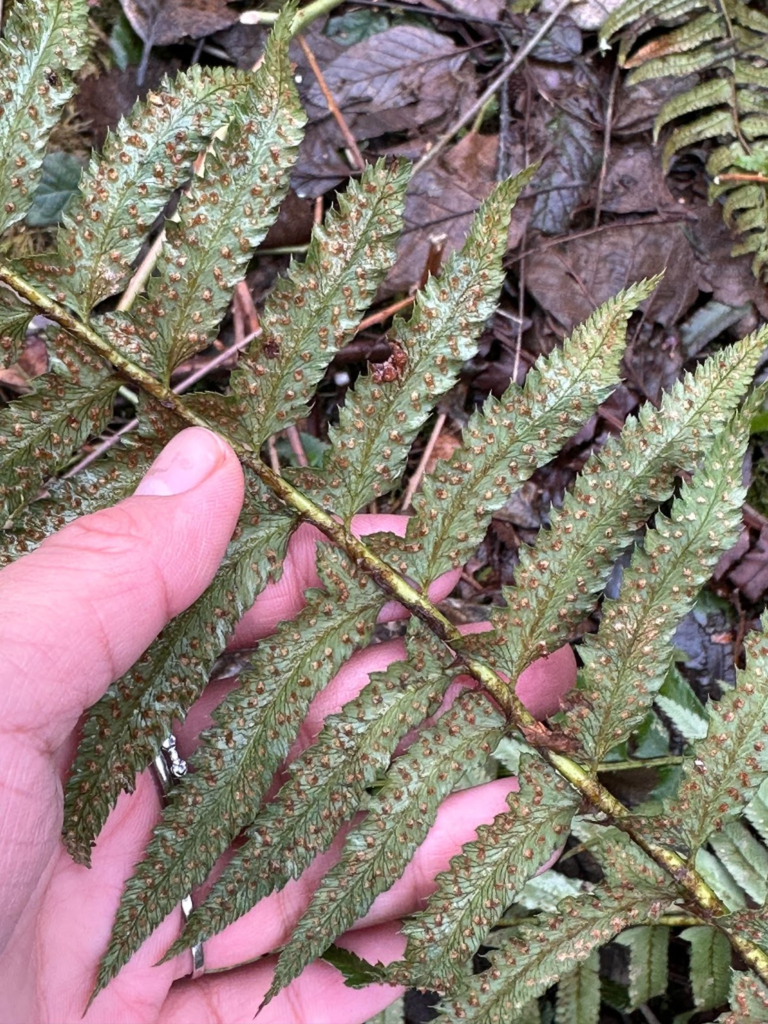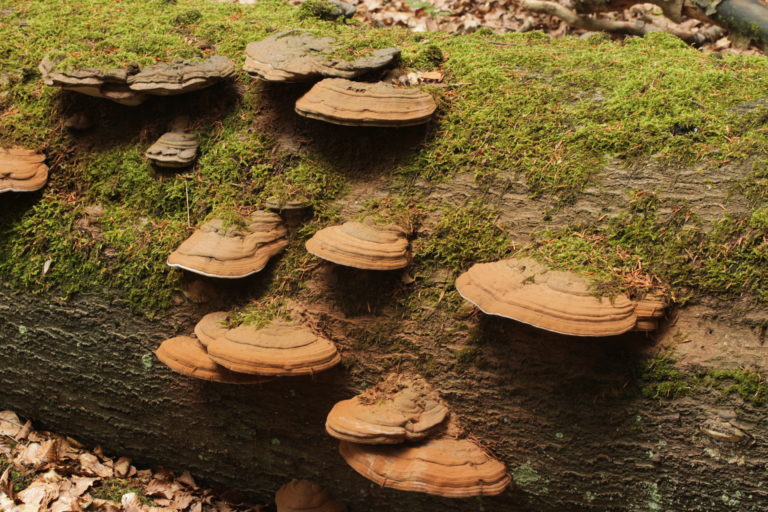Written for Ethnobotany, 2023
hul’q’umi’num’ sne: sthxelum (Charlie & Turner, 2021)
Proto-Coast Salish: s-(ts)x̱al-m, “sword fern” (Kuipers, 2002)
This is a plant known to the halkomelem mustimuhw by the name of sthxelum. Nations along the Salish Sea often share similar traditional uses of each plant holding similar names for the plants as well.



Examples for linguistic purposes:
hən̓q̓əmin̓əm̓: sθχeləm
SENĆOŦEN: SŦXȺLEM
Xws7ámeshqen: sx̲álem’
Genus: Polystichum
Binomial name: Polystichum munitum
Polypodiaceae comes from the Polypody family.
Polypody definition: a widely distributed fern which has stout scaly creeping rhizomes and remains green during the winter, growing on trees, walls, and stones, especially in limestone areas. (Noun)
What does poly mean in chemistry? a combining form with the meanings “much, many” and, in chemistry, “polymeric,” used in the formation of compound words.
In Hul’q’umi’num’, we would use the word qux for the same meaning.
qux [√qux] much, many, a lot.
• example sentence 1: qux ts’u mustimuhw swaw’lus nem’ tsam suw’q’. • There were many young men that went up the mountain to look for him.
• example sentence 2: lumnuhwus tthu qux ’eshw sqw’iqw’um’ ni’ ’u tthu skwthe’s. • He saw a lot of seals out of the water on the island.
quxthat [√qux=that] many, become many.
• example sentence: …nan’uw’ ulh quxthat skw’ey tse’ kws mukw’tst nem’ ’uw’ huyen’hw ’u kw’ nuts’ehw nem’ shhw’imushtst. • We have too many now, we won’t be able to take them all in one trip.
qaxthut [√qux=that=PROG] many, becoming many.
• example sentence: ’e’ut yuqaxthut tthu tth’uxtth’ux. • There are getting to be a lot of stinging nettles.
hwqxa’wuth [hw=√qux=a’wuth] many kinds, diverse (RP JUN83)
• example sentence 1: hwqxa’wuth tthu sqwal. • There are different versions of speaking.
• example sentence 2: tl’lim’ nan ’uw’ hwqxa’wuth thu slhexun’stamut ’u kwthu taktu. • The doctor gave you many different kinds of medicine.
Traditional uses of sthxelum:
According to Luschiim in Luschiim’s Plants (2021) sthxelum is a very sacred plant used by the Hul’q’umi’num’ people in ceremonies. For example to ’aqw’ut thu xuw’salkwlh and when you go kw’aythut you harvest the sthxelum to use it as a thul’shutun. When finished using the sthxelum I was taught to put it in a flowing stream so it will be carried away. Luschiim notes that sthxelum should be up where the wind will catch it in the branches, so the wind will cleanse off whatever you’ve wiped off.
Snuneymuxw elder late Ellen White says: “sthxelum isn’t just used for our sacred ceremonies it is often used for preparing food like cutting fish or holding berries. The leaves are flat and thick so the juices of the food won’t soak through as easily. The plant itself is also a resource for food…”
My personal experience with sthxelum:
At the beginning of my traditional research technician position, I attended many nature walks learning ethnobotany and historical stories. One day during a workshop I attended with lhunu si’lu huyamise (Della Rice-Sylvester) she had expressed that if you have body pain on your back, you can harvest the sword fern using the cultural teachings and apply this plant to your back. I harvested the sword fern then applied it to my back. After a certain amount of time the pain in my back went away for the day. Della told us, “The plants can feel energy. What is really important is your intention with the plant and its use.”
What I have learned about medicinal plants is that photosynthesis and cellular respiration are very important factors in our everyday activities. As a hwulmuhw slheni’ raised by kwthu s’uleluhw tun’ni’ ’utl’ tthu hul’q’umi’num’ tumuhw, ’i tsun tatul’ut tthu snuw’uyulh. I was told by my grandma that “it is so important to respect all living things because they are here for a purpose.” We are taught by our sul-hween to respect all living things on earth and be thankful for the ones that sacrifice their life for our personal needs, which is why it is so important to not be greedy and only take what we need. In science, matter is all substances that have mass and take up space by having volume. All of the everyday objects that can be touched are ultimately made of atoms.
References:
Charlie, Luschiim Arvid., and Turner, Nancy. (2021). Luschiim’s plants. Harbour Publishing, Madeira Park, BC.
Ellen White, Flora and Fauna Corpus.
Kuipers, Aert H. (2002). Salish Etymological Dictionary. Linguistics Laboratory, University of Montana, Missoula.
Montler, Timothy. (2018). SENĆOŦEN: A Dictionary of the Saanich Language. University of Washington Press, Seattle.
Wikipedia. (Accessed 2023). Polystichum munitum. https://en.wikipedia.org/wiki/Polystichum_munitum
